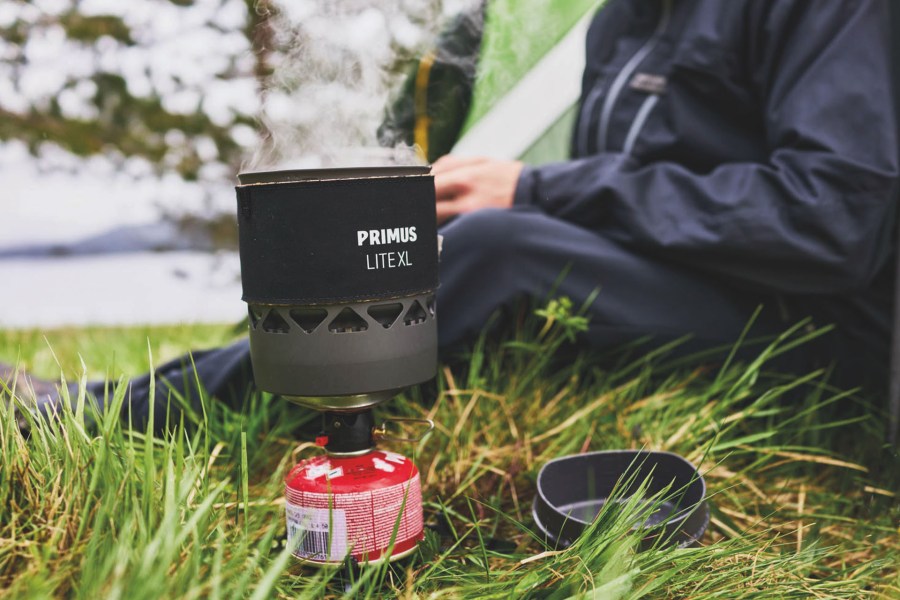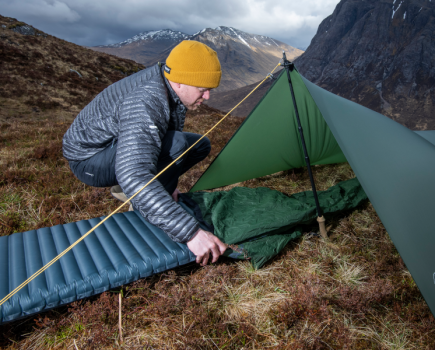Cleaning your camping stove, and the pots and pans that are used with it, is vital for a number of reasons. First of all, it’ll maintain your kit’s performance and it’ll also make it last longer. Then there’s the fact that you don’t really want your hot chocolate tasting of last night’s curry flavoured noodles. I can tell you with authority that this is in no way pleasant. In this article, I’ll explore the importance of cleaning a camping stove and any pots you use with it, plus I’ll go through the various methods of how to clean a camping stove and step-by-step instructions to keep your stove in pristine condition.
Why a camping stove gets dirty
Sometimes the mess from cooking is unavoidable, particularly when you’re cooking greasy, oily food like bacon and steak, but there are also cases where potential mess and debris build up can be avoided with the right prep, care and methods.
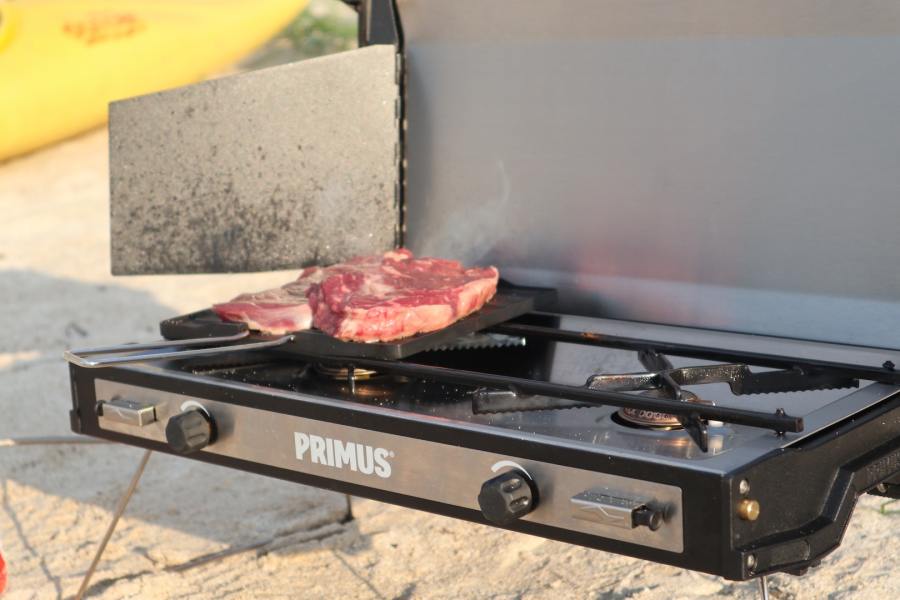
Steak = a recipe for a dirty stove!
Cooking food at too high a heat is one sure-fire way to cause food to burn and stick to the bottom of your pan. Insufficient oil or fat in the pan can also lead to food sticking and burning. The oil creates a non-stick barrier between the pan and the food, preventing direct contact and excessive browning.
Overcrowding the pan can be another issue. Large amounts of food packed in together can cause the temperature to drop rapidly after the pan is removed from the heat source. As a result, the food releases moisture, and instead of sautéing or browning, it begins to steam and stick.
Then there’s neglecting to stir the contents or using overly starchy or sugary foods or simply just cooking food for too long.
Most pots and pans that integrate with stove systems come with non-stick coatings and when these get damaged that’s when food tends to latch on and burn. How do they get damaged? Usually it’s when you use a metal fork or spoon to stir your food or scrape food from the pan. It can also happen when you clean using a scrubber that’s too abrasive.
How to clean stove pots and pans
Here are some steps to follow when you’re cleaning pots and pans used for camping stoves:
- If you have burnt food onto the pan, try gently warming up some water inside of it to loosen anything that’s stuck
- Turn the stove off and wait for the pan to cool down
- Remove the pan from the stove and scrub with a soft cloth that isn’t too abrasive. An old toothbrush works well. A mild detergent can certainly speed things up here. Make sure to use one that’s biodegradable and not harmful to the environment (it’s worth checking out Lifeventure’s options) and avoid washing pans directly in a river as this could contaminate the water
- If you’re at home or at a campsite with a sink, soak the pan in warm soapy water to loosen any grime then give it a scrub and rinse. Some brands advise boiling a 75/25 solution of water and white vinegar in your vessel for a few minutes or washing it with a baking soda paste with water
- Make sure to allow adequate air drying time to prevent rust. Applying a light layer of olive oil will help in this regard too.
How to clean gas canister stoves
Some stoves have specific cleaning requirements so it’s important to check these if you can before trying to clean out a burner yourself. MSR, for instance, have certain stove heads and stoves with Piezo ignitors that shouldn’t be submersed in water or sprayed with WD40.
In most cases, most debris stuck to a burner will just burn off. You can also try shaking a burner upside down to clear out any detritus that might be inside it. For more stubborn dirt, some burner heads can be dipped in water (again check the brand’s advice there). You could also give it a scrub with a toothbrush or use a pin or cocktail stick to poke out any clogged up burner holes.
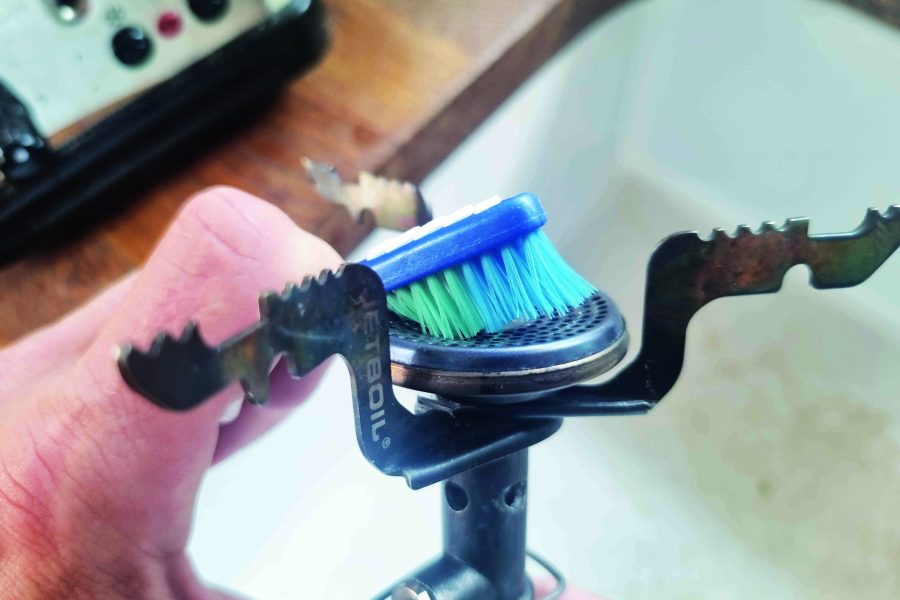
With larger camp stoves, turn the system off, allow it to cool down and then give the hobs and grill area a wipe down with a damp cloth. Some of these types of stoves will have removable plates to make the cleaning process easier.
Mild detergents, a white vinegar and water mix or baking soda mixed into a paste with water – all of these work well if you’re cleaning the burner at home or at the washing up area at a campsite. If your camp cooker has a huge amount of grease and dirt build up, you could use a pressure hose – the type you’d find at a car wash – just be careful that you don’t damage any fragile parts like the spark ignition or burners themselves.
To protect a burner from rust, make sure to allow adequate air drying after it’s been washed. You could also add a light layer of WD40 or even just olive oil to it to provide a protective shield. To remove rust that has already formed, try lightly scrubbing it away with an abrasive bad, steel wool or sandpaper.
How to clean liquid fuel stoves
Just as with gas burner stoves, the best idea before attempting to clean a liquid fuel stove is to check the brand’s guidelines. If there’s no guidance available try these steps.
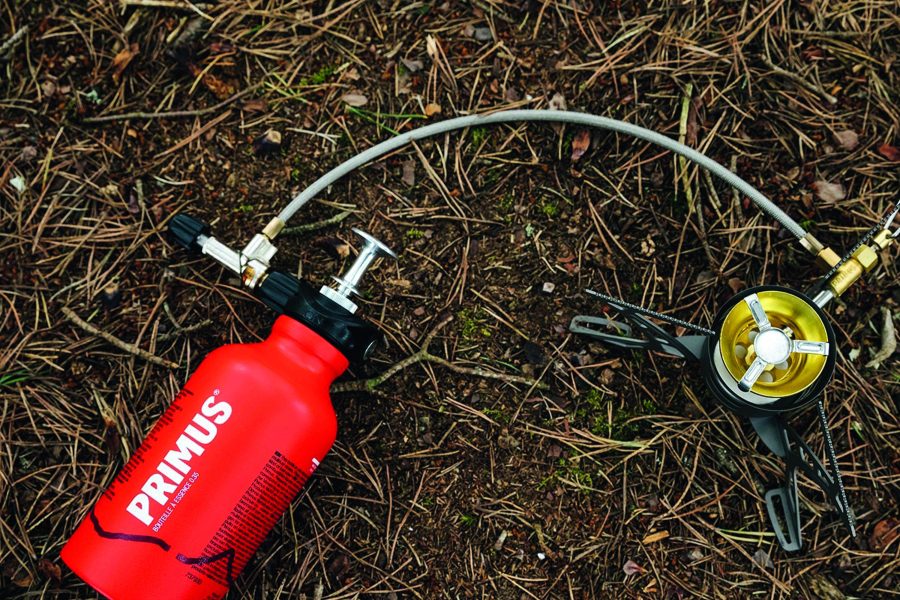
An example of a multi-fuel stove.
- Let any food that’s stuck to the burner simply burn off
- Tap the burner on a rock or hard surface to let dirt fall out
- Let the burner cool and wipe off any food or gunk with a damp cloth or brush with an old toothbrush
- Use WD40 inside the fuel line to clear out any build up inside it
- Air dry the stove to prevent rusting
Broken stoves
If your stove isn’t functioning as it should and you’ve tried all the steps to clean it, it’s time to get in touch with the brand directly. They might be able to advise you on how to solve the issue or offer to repair it. They could even send you out a replacement. Post-purchase service varies from brand to brand but warranties are generally good with the popular camping stove makers and they’ll often be obliging if the product needs to be replaced.

